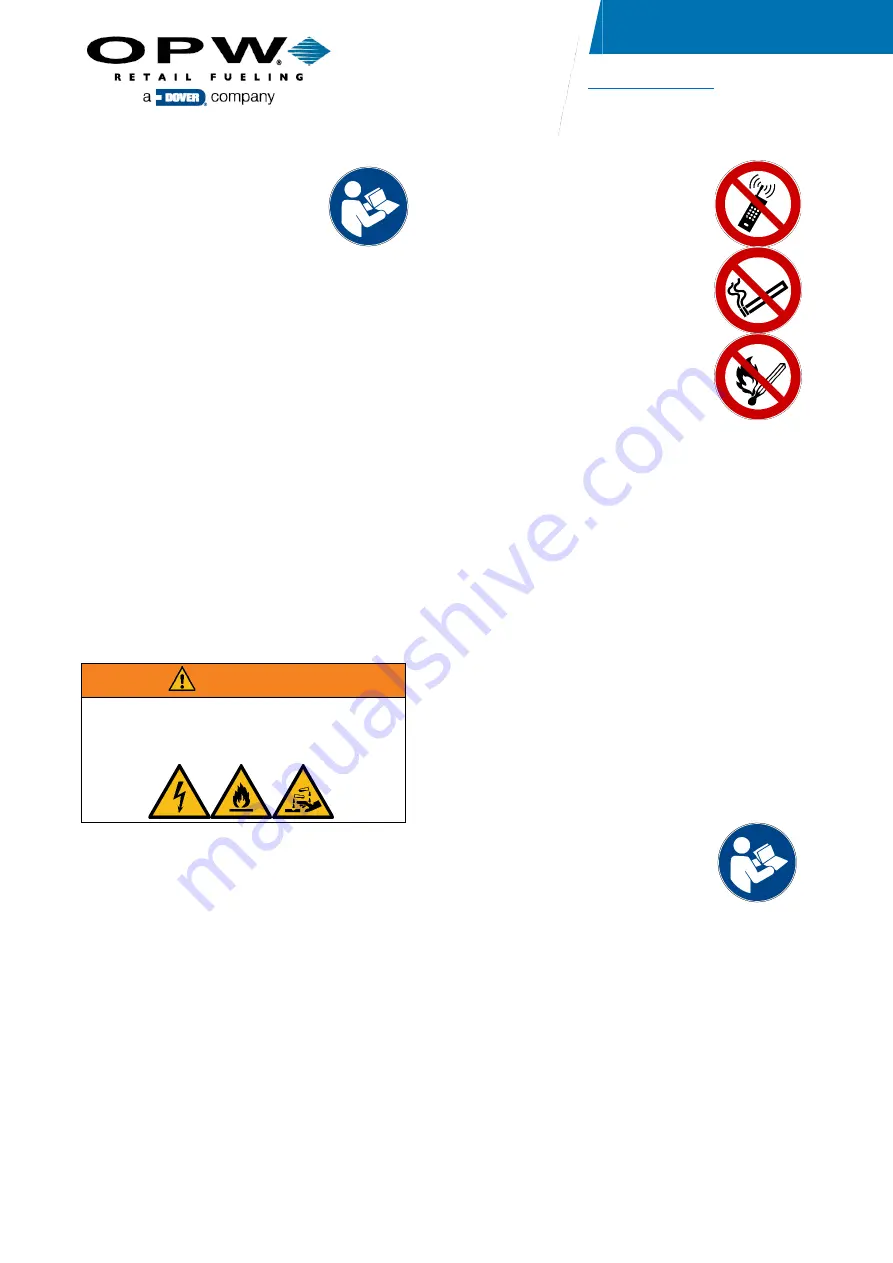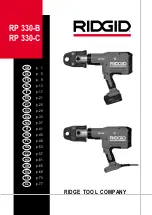
Please visit OPW’s website:
information or contact OPW Customer
Service at
+44 (0) 1756 799 773
(EU)
or
1-800-422-2525
(US)
opwglobal.com
2
DEFINING
| WHAT’S NEXT
214916 revision A
September 2019
RESPONSIBILITIES
•
Employees must enforce compliance
with the safety warnings and all other
instructions contained in this manual
and all federal, state and local
warnings/instructions.
•
Keep this manual available for use by all employees
and/or customers.
•
For personal safety and proper operation of this
equipment, read and follow all these instructions
carefully.
GENERAL REQUIREMENTS
•
This nozzle is designed for use only at facilities
dispensing motor fuels.
•
High flow rates in excess of the regulatory allowable may
result in splash-back or spillage. Damage and/or injury
may result.
•
Nozzles shall be used in accordance with local and
national safety codes.
•
OPW products should be used in compliance with
applicable federal, state, and local laws and regulations.
Product selection should be based on physical
specifications and limitations and compatibility with the
materials to be handled. OPW makes no warranty of
fitness for a particular use.
BEFORE AND DURING FUELING
•
OPW recommends posting the following warnings in a
visible location for the fueling public. Additional warnings
may be required. Please contact authorities having local
jurisdiction for requirements.
WARNING
Static electricity, fire hazard, and chemical
exposure hazard. Failure to comply to the
following warning could result in property
damage, injury or death.
•
Turn off your engine before refueling. Vehicle must
remain off during the entire fueling procedure.
•
Discharge your static electricity before refueling.
•
Before using the dispenser, touch any grounded metal
on the car or dispenser away from the nozzle and your
vehicle’s fuel pipe with bare hands. This will discharge
static electricity on your body. Failure to discharge may
ignite petrol vapours.
•
DO NOT re-enter your vehicle while refueling. This can
re-charge your body with static electricity. If you must re-
enter your vehicle, discharge static again before
touching the nozzle.
•
DO NOT fill containers in or on the vehicle. Static
electricity can ignite petrol vapours and cause a fire. Fill
approved portable containers on the ground. It is
dangerous to put petrol into an unapproved container.
•
Keep nozzle in contact with the container until finished
filling to discharge any static generated during fueling.
•
When filling an approved portable
container, flow fuel at low flow rate to
prevent static build-up. DO NOT put
trigger in rack position; manually hold
open.
•
Turn off cell phones and other
electronic devices to avoid
distractions.
•
DO NOT smoke or allow open
flame/sparking devices near the
product dispensers.
•
Extinguish all pilot lights and open
flames. For example, the pilot light in
a motorhome or caravan must be
extinguished.
•
If a fire starts,
DO NOT REMOVE
THE NOZZLE FROM THE FILL
PIPE
. Back away immediately and tell the attendant. If
no attendant is on site, use the emergency shut-off
button to stop the pump.
•
DO NOT start engine during refueling. Vehicle must
remain off during the entire fueling procedure.
•
DO NOT leave nozzle unattended. Nozzle performance
and the automatic shut-off feature are influenced by
many factors. If nozzle does not shut off during refueling,
stop pump immediately.
•
DO NOT use foreign objects to hold open automatic
nozzles. Use of foreign objects could result in failure to
shut off.
•
Fuels can be harmful or fatal if swallowed. Long-term
exposure to vapors has caused cancer in laboratory
animals.
o
Avoid prolonged breathing of vapors.
o
Keep away from eyes and skin.
o
Failure to use caution may cause serious injury,
illness or death.
•
DO NOT allow children to dispense fuel. Only persons of
license age (of legal driving age) should use dispenser.
Keep children away from the dispenser area.
INSTALLATION INSTRUCTIONS
•
Before beginning installation of the
product, please carefully read all
warnings.
•
Failure to comply with warnings could
result in property damage, injury or
death.
•
Do not use power tools (Hazardous location: Zone 1
and/or Zone 2) during installation process and
maintenance of equipment.
•
Always wear appropriate safety equipment during
installation or maintenance of equipment.
•
Do not install unlisted ad/billboard or other unlisted after-
market device on any automatic nozzle. Doing so may
change the sensitivity of the shut-off mechanism. Nozzle
may not shut off, causing a fuel spill.
•
Follow all manufacturers’ instructions.
•
Use safety cones to mark-off work area.


























